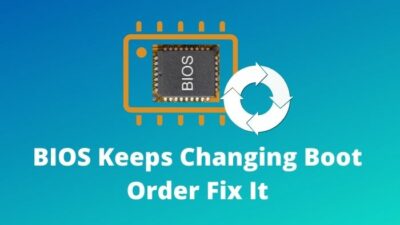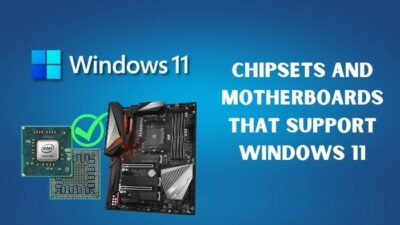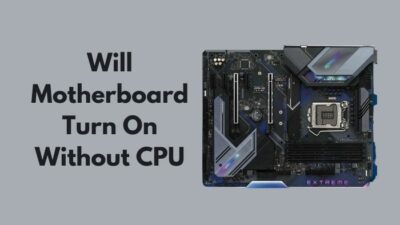You just noticed that you haven’t replaced or recharged your motherboard’s battery in years.
Now, you are wondering if you can simply recharge the battery instead of replacing it.
Are motherboard batteries rechargeable?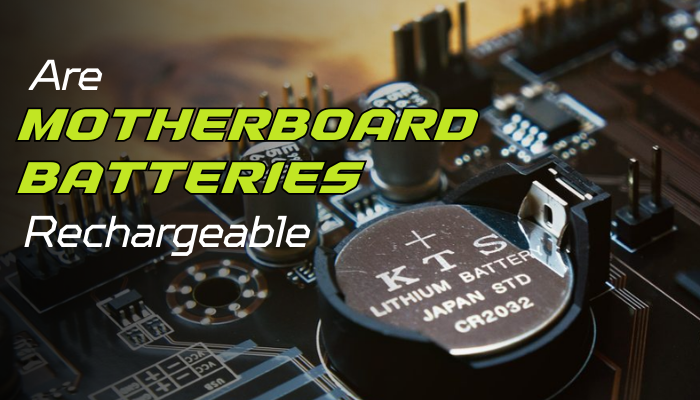
Relax, you are not the only one who’s confused about this. I have worked with many motherboards over the years and I’ve gathered all the important information from my experience in this article.
So, I need you to stay alert while reading this article till the end so you are free of any doubts.
Quickly check out the best Motherboard for Ryzen 5 5600x.
What Kind Of Battery Does A Motherboard Use?
The nonvolatile memory and the real-time clock present on the motherboard are powered by a coin cell battery, specifically the CR2032. The battery life when the power supply is kept unplugged is about 3 years.
Here’s a complete guide on how to fix motherboard can’t detect hard drive.
However, this can be extended with the help of the standby current from the power supply when the computer is plugged in.
On another note, these all motherboards have a function built-in that completely halts the charging and discharging of the battery once it detects that the motherboard is being powered on.
The real-time clock on the motherboard has an accuracy of plus or minus 13 minutes or year at 25 degrees C with 3.3 VSB applied.
Don’t have time to read? Well, check out Best Motherboard For The AMD Ryzen 7 3700X
What Happens If The Battery On the Motherboard Died?
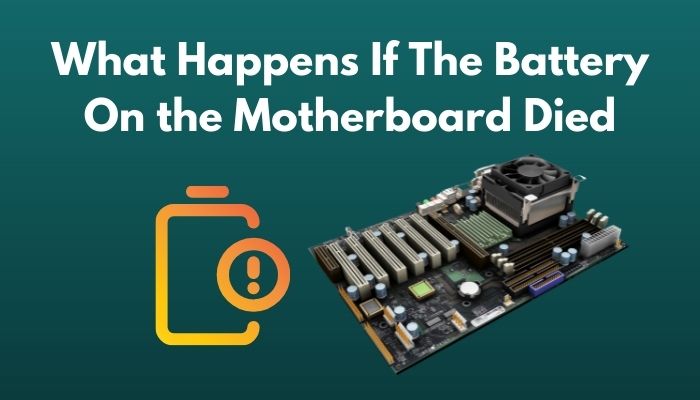
Well, don’t worry. Your PC will still work even if the motherboard’s battery dies. However, you will need to reset the date and time settings and the computer will always boot with the default BIOS settings.
Also, check out our separate post on how to fix motherboard HDMI no signal.
Either that or you will need to choose the drive where the main operating system is installed every time you boot your computer.
While it’s unlikely, there are some cases where a dead CR2032 battery led to an unbootable computer.
If you face a similar issue, all you need to do is just replace the battery and you will once again have a working computer.
Check out our separate post to find out whether Motherboard Bottlenecks GPU.
Are All Motherboard Batteries The Same?
Although motherboard batteries are somewhat generalized, mainly for ATX motherboards, you will find that not every motherboard will have a CR2032 battery built in. One thing that they all have in common is that they all have 3 to 3.3V.
So, you can understand from this that if you ever need to replace your battery, you won’t have to stick to CR2032. You can also choose something like the CR2016.
But, if you choose to do that, you should keep in mind that the CR2016 battery life is about half of the battery life of CR2032.
The batteries in the older motherboards will use some variation of a larger 6-volt battery with the dimensions of 2 inches x 0.5 inches x 0.5 inches.
How Often Should You Replace CMOS Battery?
The CMOS battery will get charged whenever you plug your laptop in. Only when you unplug it, the battery will start to discharge. The majority of batteries last from 2 to 10 years starting from the date they were manufactured.
I’m talking about the CR2032 here. The other batteries last for a shorter period of time.
In any case, the battery life still relies largely on the motherboard itself, the ambient temperature around it, and also the time that it was powered off.
If the battery was exposed to hotter temperatures or if it was kept powered off for a longer time, then it will significantly shorten the cell life.
One thing to note when replacing the cell is that the system time and CMOS BIOS settings might be reset.
If you want to keep this intact, you can simply avoid this by replacing the cell while keeping the power supply master switch on.
If you’ve got an ATX motherboard, then this will supply 5 V power to the motherboard even if it is apparently switched off, and keep the CMOS memory active.
FAQ
Question: Can a dead CMOS battery stop a computer from booting?
Answer: Nope. It’s highly unlikely that a CMOS would lead to a nonbooting situation. On the other hand, if there is a CMOS checksum error, then you might be dealing with a BIOS issue. If your PC is not doing anything when pressing the power button, the PSU might be at fault.
Question: How many volts should a CMOS battery have?
Answer: The typical range of voltages for a CMOS battery is between 3 to 6 volts. The best method to find the right voltage for your motherboard is by checking the motherboard or reading the motherboard documentation.
Question: How many years does CMOS battery last?
Answer: A CMOS battery typically lasts around five years but you can choose to prolong the battery’s life by making sure to use your computer on a daily basis. The more the standby current availability, the better the life of the battery.
Question: Can a dead CMOS battery cause blue screen?
Answer: It can’t be ruled out but there have been no reports of a CMOS battery causing blue screen of death. If you suspect that your battery is causing issues like this, replace your battery with a new one or borrow one from your friend and test if that fixes the issue.
Question: Can you replace CMOS battery with computer on?
Answer: Yes, I have done this on multiple occasions but you need to be extra careful as there is a chance of short or other issues.
Question: Does removing the CMOS battery reset BIOS?
Answer: Yes. Removing the CMOS battery has a few downsides like it causes the system to lose all CMOS settings which includes the BIOS password. As a result, you will have to perform repetitive tasks like choosing the operating system drive on every boot.
Question: How do I check my motherboard battery?
Answer: You can find a button type CMOS battery on the motherboard of your PC. Use a flat head type screwdriver and use it to slowly lift the button cell from the motherboard. Then, use a digital multimeter to find the voltage of the battery.
Question: What are the symptoms of a dead motherboard battery?
Answer: The most common signs include failures to boot, random shutdowns,constant resetting of the date and time and a consistent beeping sound from the motherboard. If you have these symptoms, you shouldn’t wait for long to replace the battery.
Final Thoughts
Motherboard batteries have a very small and simple function and that is to provide power to the Complementary Metal Oxide Semiconductor or CMOS chip. This provides power even when the computer is off, allowing the CMOS to save all settings.
That’s why you should get a replacement if you are dealing with a damaged battery. They are definitely not the most expensive component in your setup.
I hope I was able to clear up the doubts you had when you started reading this article and if I didn’t, please reach out to us. Also, stay tuned for more tech updates.

